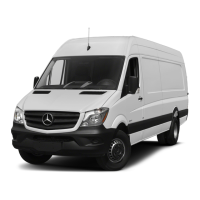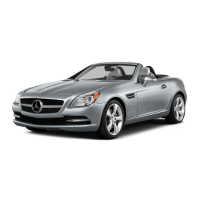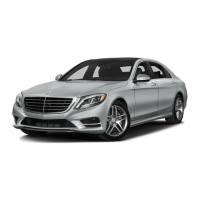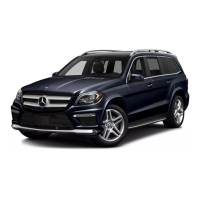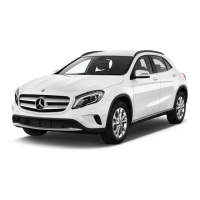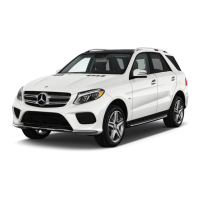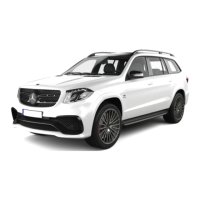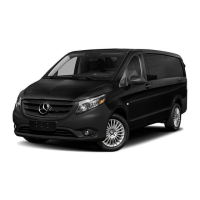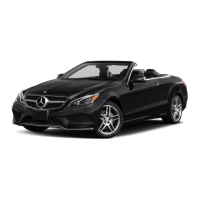R
The seat belt is not routed over sharp, pointed
or fragile objects.
If these items are on or in your clothing, e.g.
eyeglasses, pens, keys, etc., stow these items
in a more suitable location.
R
Only one person should use each seat belt at
any one time.
On no account should babies or children
travel sitting on the lap of another vehicle
occupant. During an accident, they could be
crushed between the occupant and seat belt.
R
Objects are not secured with a seat belt if the
seat belt is being used by one of the vehicle’s
occupants.
Also make sure that there are no objects, e.g.
cushions, between the occupant and the seat.
Seat belts are solely intended for the protection
and restraint of the vehicle occupants. To
secure objects, luggage or loads, always
observe the "Loading guidelines" (
Y page 212).
Fastening and adjusting seat belts
Observe the safety notes on the seat belt
(
Y page 40) and the notes on correct use of seat
belts (
Y page 41).
Basic illustration
X
Adjust the seat (Y page 72).
The seat backrest must be in an almost ver-
tical position.
X
Pull the seat belt smoothly from belt outlet =
and engage belt tongue ; into belt
buckle :.
X
If necessary, pull upwards on the shoulder
section of the seat belt to tighten the belt
across your body.
The shoulder section of the seat belt must
always be routed across the center of the shoul-
der. Adjust the belt outlet if necessary.
X
To raise: slide belt outlet = upwards.
The belt outlet will engage in various posi-
tions.
X
To lower: hold belt outlet release ? and slide
the belt outlet = downwards.
X
Let go of belt outlet release ? in the desired
position and make sure that the belt outlet
engages.
All seat belts except the driver's seat belt are
equipped with a special seat belt retractor to
securely fasten child restraint systems in the
vehicle. Further information can be found under
"Special seat belt retractor" (
Y page 48).
Releasing seat belts
!
Make sure that the seat belt is fully rolled up.
Otherwise, the seat belt or belt tongue will be
trapped in the door or in the seat mechanism.
This could damage the door, the door trim
panel and the seat belt. Damaged seat belts
can no longer fulfill their protective function
and must be replaced. Visit a qualified spe-
cialist workshop.
42
Occupant safety
Safety

